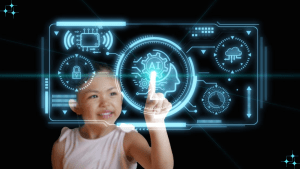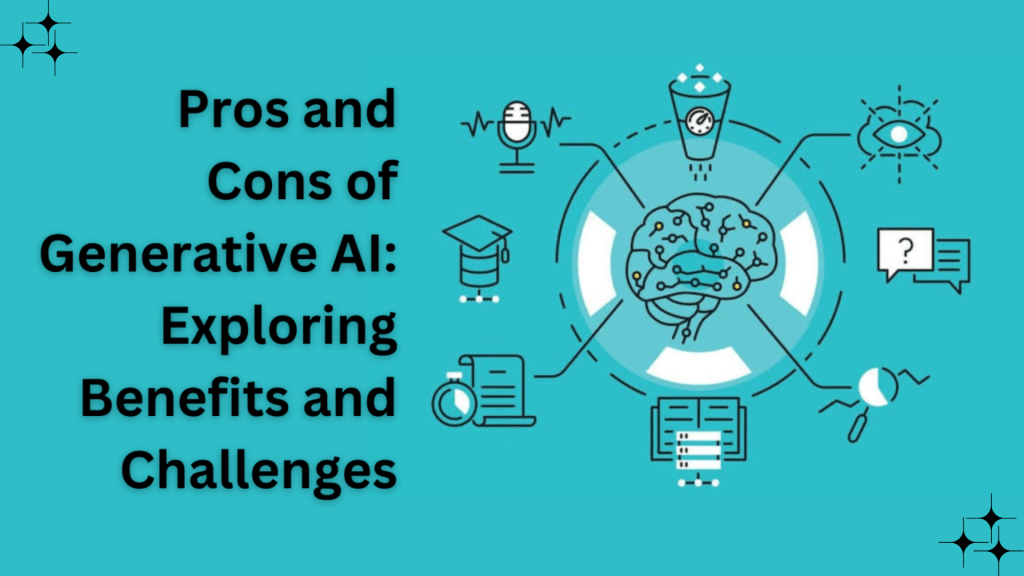Generative AI is rapidly transforming the way we live, work, and interact with technology. From creating lifelike images and generating human-like text to composing music and writing code, generative AI has captured global attention across industries. As with any powerful innovation, it brings both remarkable benefits and serious challenges.
This article explores the pros and cons of generative AI, offering a balanced view of its capabilities, limitations, and implications for the future.
What is Generative AI?
Generative AI refers to a subset of artificial intelligence technologies that can produce new content based on the data they have been trained on. These models learn patterns, styles, and structures from vast datasets and use that knowledge to generate text, images, audio, video, or even 3D designs.
Popular examples of generative AI include:
GPT models like ChatGPT (text generation)
DALL·E and Midjourney (image generation)
Sora by OpenAI (video generation)
Deepfake tools (synthetic media creation)
MusicLM (music composition)
These models rely on deep learning techniques, particularly transformers, which enable them to understand context, structure, and semantics in a way that mimics human creativity.
Pros of Generative AI
1. Increased Productivity and Efficiency
Generative AI tools can automate repetitive and time-consuming tasks such as drafting emails, summarizing documents, writing reports, and even coding. This enables professionals to focus on higher-value work that requires critical thinking and decision-making.
Example: Programmers can use AI code assistants to speed up development by generating boilerplate code or debugging errors.
2. Enhanced Creativity
Artists, designers, writers, and musicians can use generative AI to co-create content, find inspiration, or explore new styles. AI can act as a creative partner, expanding the boundaries of what is possible.
Example: Writers use AI tools to brainstorm plot ideas, generate dialogue, or refine their style.
3. Personalization at Scale
Generative AI can tailor content to individual preferences, making it ideal for marketing, e-commerce, and education. It enables businesses to deliver personalized product recommendations, email campaigns, or learning content.
Example: E-learning platforms can generate custom quizzes and study material for each student based on their performance.
4. Democratization of Content Creation
Previously, creating professional-grade content required expertise in design, video editing, or programming. Generative AI lowers these barriers, empowering non-experts to generate high-quality images, videos, or applications.
Example: A small business owner can use generative AI to create logos, promotional videos, and website content without hiring a full design team.
5. Medical and Scientific Advancements
Generative AI has shown promise in drug discovery, protein folding, and medical imaging. It helps researchers model complex systems, generate synthetic data, and accelerate scientific innovation.
Example: AI-generated molecules can be tested for potential as new drugs, significantly reducing R&D time in pharmaceuticals.
Cons of Generative AI
1. Misinformation and Deepfakes
One of the most alarming drawbacks is the ease with which generative AI can create convincing but false information—images, videos, or articles that appear authentic but are entirely fabricated.
Example: Deepfake videos of political figures making false statements can spread misinformation and influence public opinion.
2. Bias and Ethical Concerns
Generative AI models learn from existing data, which may include biased or harmful content. As a result, AI-generated outputs can reflect or amplify stereotypes, discrimination, or offensive language.
Example: An AI chatbot might generate sexist or racist comments if trained on biased internet data.
3. Intellectual Property Issues
Generative AI can inadvertently plagiarize or mimic the work of real artists, writers, or musicians. This raises questions about copyright infringement, authorship, and fair use.
Example: AI-generated artwork resembling the style of a famous painter may lead to legal disputes over ownership and originality.
4. Job Displacement
As generative AI becomes more capable, it may reduce the demand for certain creative and technical jobs. While it also creates new roles, there’s concern about job displacement in sectors like content writing, graphic design, customer service, and software development.
Example: Media companies might replace human writers with AI to produce bulk content quickly and cheaply.
5. Security Risks
Generative AI can be misused to create phishing emails, malicious code, or voice clones for social engineering attacks. It gives cybercriminals new tools to deceive and exploit victims.
Example: Fraudsters can generate audio of a CEO’s voice to trick an employee into transferring funds to a fake account.

Finding the Balance: Responsible Use of Generative AI
To harness the power of generative AI while minimizing harm, a responsible and ethical approach is essential. This includes:
– Regulation and Governance
Governments and organizations must establish clear policies to manage AI use, including transparency, accountability, and user consent.
– Bias Auditing and Model Testing
AI developers should regularly test models for bias, toxicity, and fairness. Diverse datasets and inclusive design practices can help reduce harm.
– Digital Watermarking and Detection Tools
To combat deepfakes and misinformation, researchers are developing watermarking techniques that can identify AI-generated content.
– Education and Digital Literacy
The public must be educated about generative AI’s capabilities and risks. Understanding how AI works helps individuals critically evaluate digital content.
Conclusion
Generative AI is a double-edged sword—an extraordinary tool with the power to revolutionize industries, democratize creativity, and unlock human potential. At the same time, it introduces new ethical, legal, and societal challenges that must be addressed with urgency and care.
As we move into a future shaped by artificial intelligence, the key will lie not in resisting its development, but in guiding its evolution responsibly. Through thoughtful design, regulation, and public engagement, we can ensure generative AI benefits humanity while minimizing its risks.


